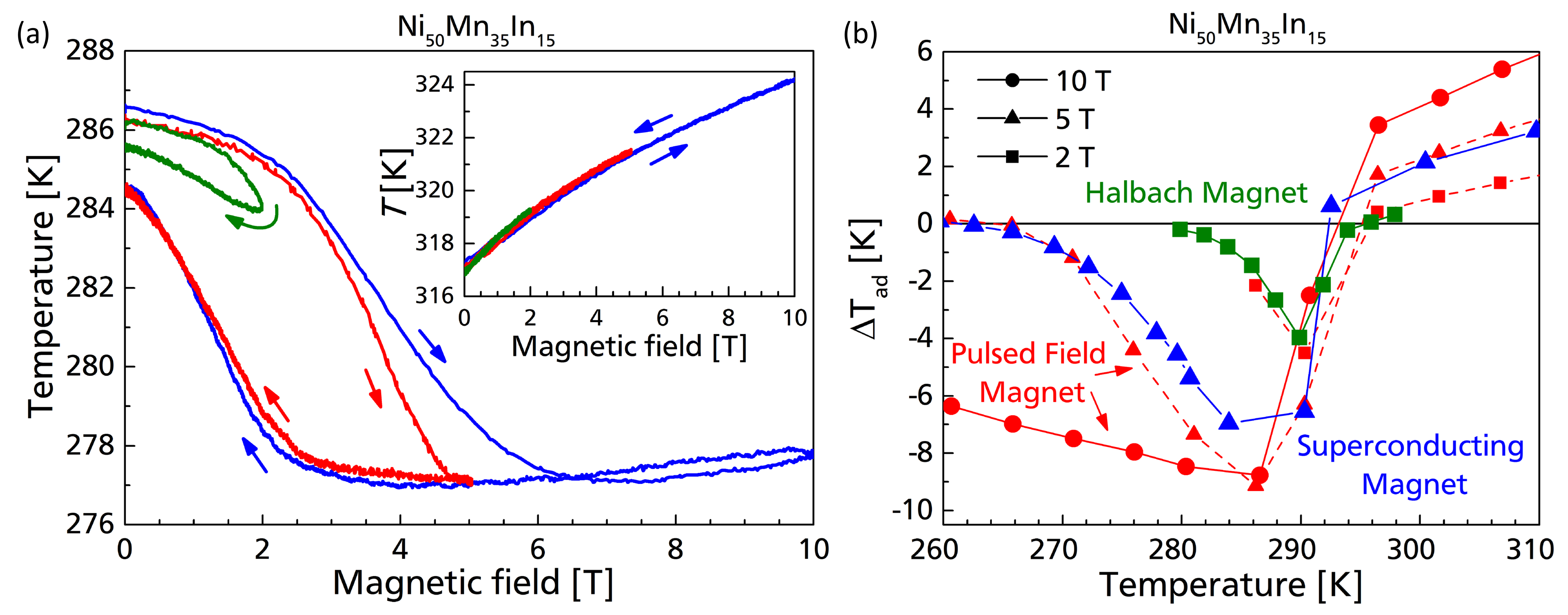Magnetocaloric Effect.
Description:
The magnetocaloric effect is measured directly by a differential copper – constantan thermocouple, having one junction “sandwiched” within the sample, and another one fixed nearby, and exposed to the same conditions as the sample [1,2].

The temperature range with the current thermocouples is 80 – 360 K. The technique is best suited for magnets A, B, and E.
| FEATURES | DRESDEN |
|---|---|
| Local Contact | Yurii SkourskiCatalina Salazar MejiaTino Gottschall |
| Field range | 0 ... 60 T |
| Temperature range | 80 ... 360 K |
| Sample size | Typically, two plates with < 4x4 mm², 2 mm height (other arbitrarily shaped samples can also be accommodated, but two flat surfaces are essential for mounting the thermocouple) Minimum sample size 1x1x1 mm³ The samples can be mounted with a defined orientation |
| Sensitivity | 0.01 K absolute |
| Typical experiment | Direct adiabatic temperature change ∆Tad (H) ∆Tad as a function of the initial temperature Field sweep rates can be varied between 200 … 8000 T/s for time-dependent studies of the magnetocaloric effect rate: < 3 K/min (controlled, typical) |
| Sample Holder |  The sample is fixed by using GE varnish. The holder is surrounded by a heater.
The sample is fixed by using GE varnish. The holder is surrounded by a heater. |
| Sample environment | Vacuum from 375 K down to 80 K |
| Measurement Examples | 
(a) Mangetocaloric effect of a Ni-Mn-In Heusler alloy showing time-dependent effect at the first-order transition [3]. (b) The maximum ∆Tad obtained in pulsed magnetic fields compared to other measurement devices from elsewhere. [1] M. Ghorbani et al., Appl. Phys. Lett. 106, 071904 (2015) [2] F. Scheibel et al., J. Appl. Phys. 117, 233902 (2015) [3] T. Gottschall et al., Phys. Rev. Applied 5, 024013 (2016) |

